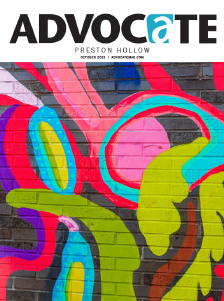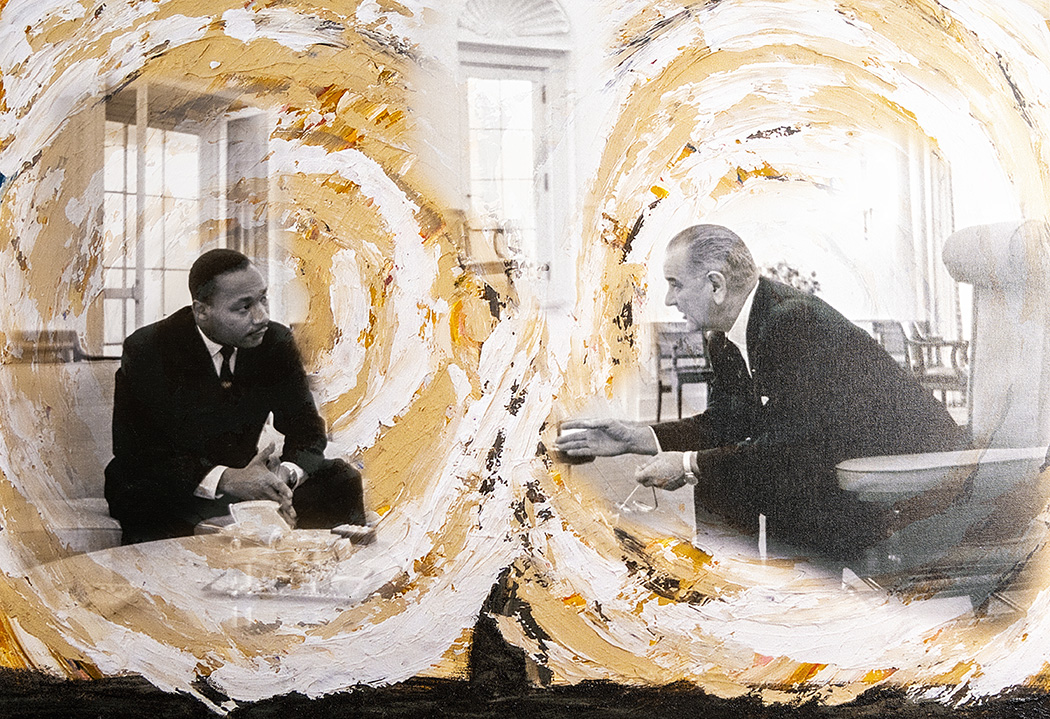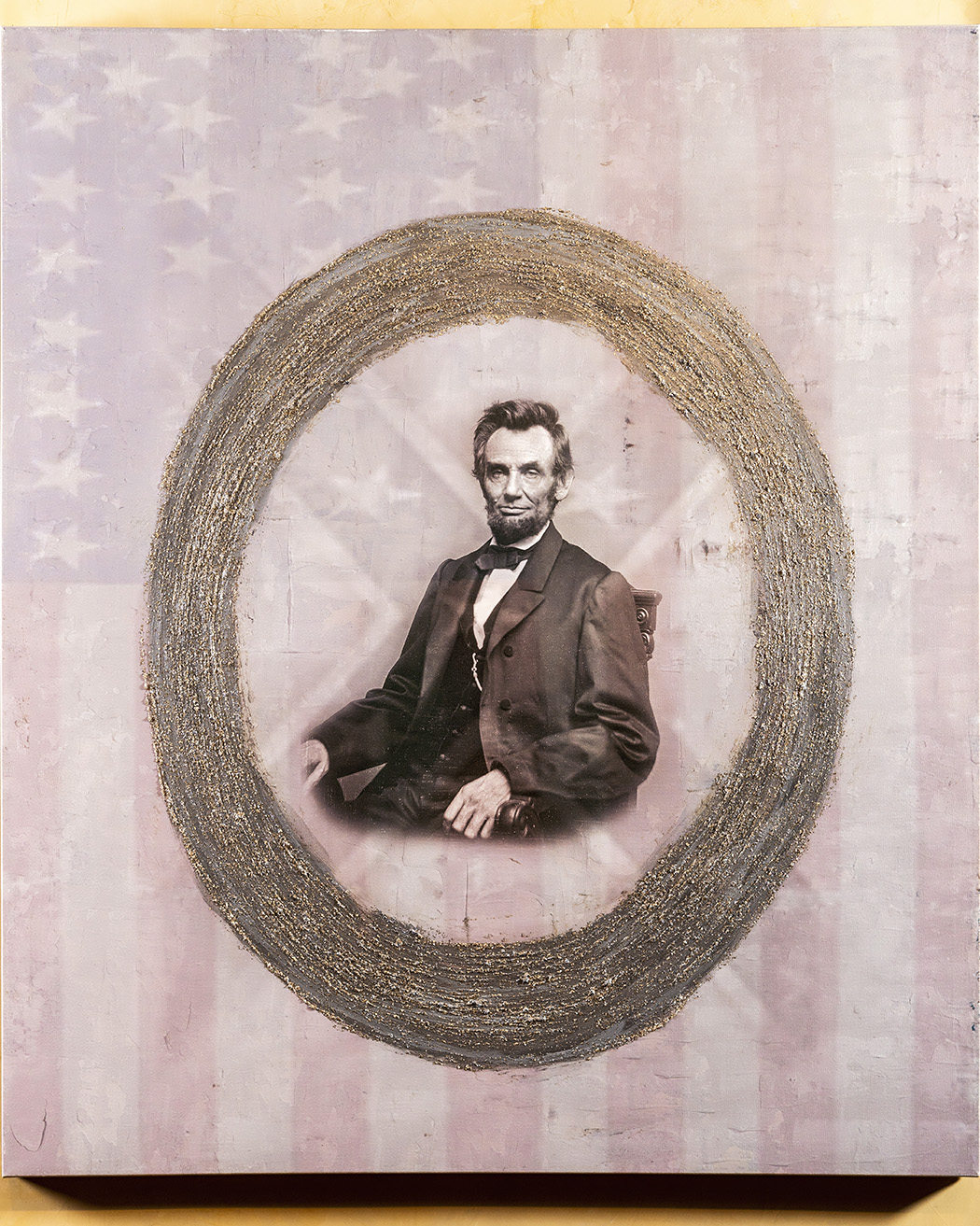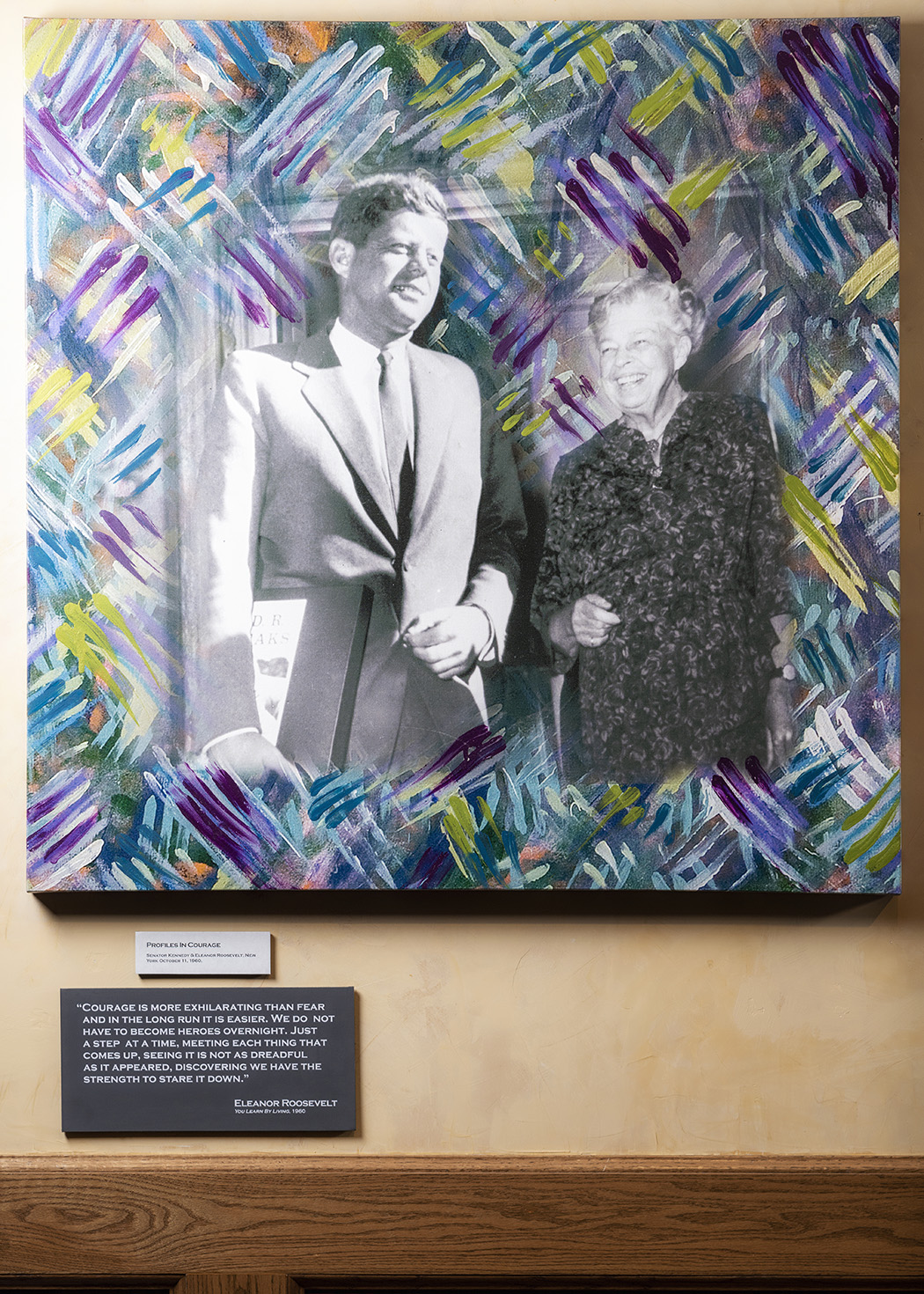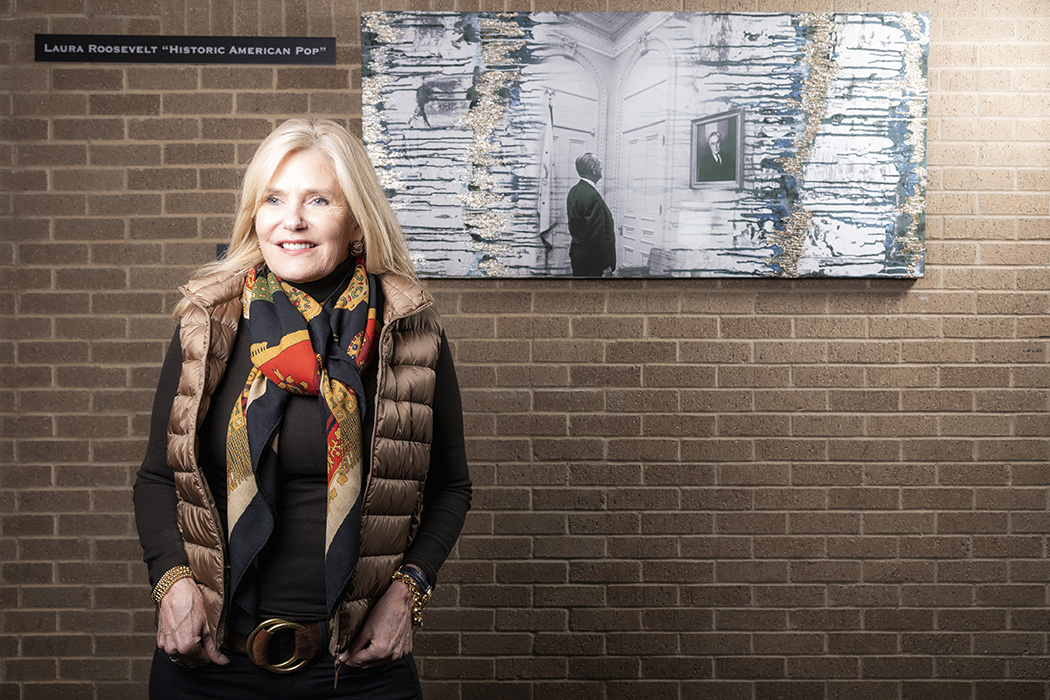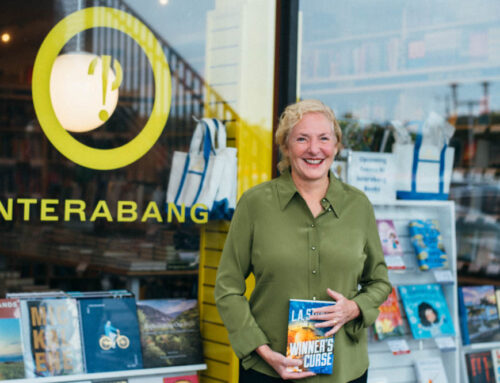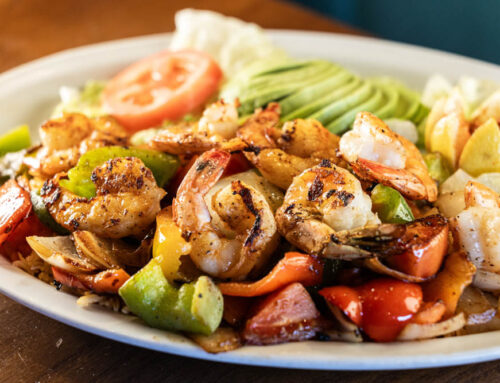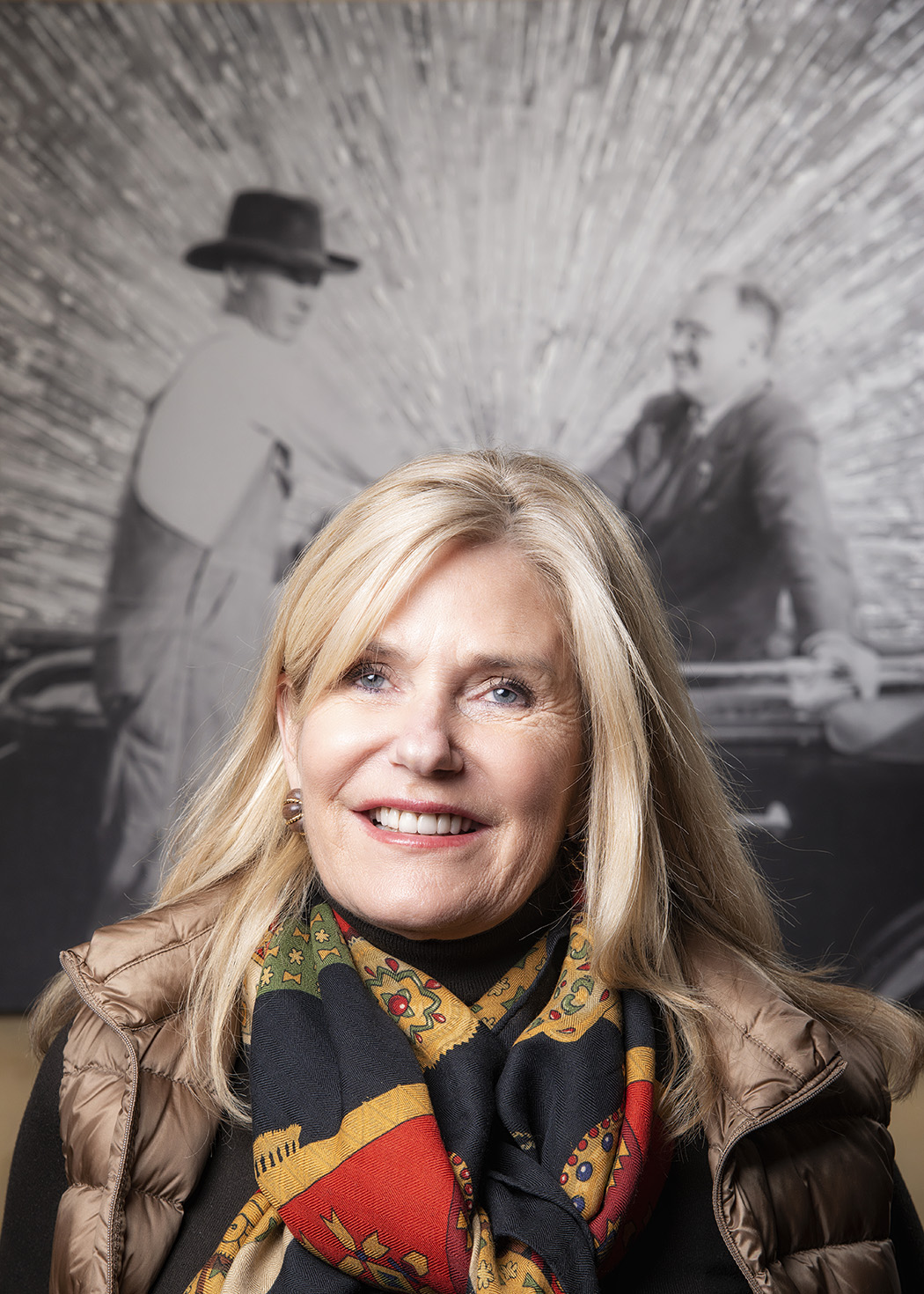
Photo by Danny Fulgencio
What’s the idea behind your art at this exhibit?
I take iconic photographs, Photoshop them and impose them on top of my abstract paintings. Then I print them and repaint them. I proposed the idea to Paul Sparrow, the director of the Franklin D. Roosevelt Presidential Library and Museum. He liked them, and I was off to the races. I did three for him. One of them is here. It’s where FDR is on the USS Indianapolis, overlooking the Argentinian fleet. I chose that photograph because it’s one of the few that I’ve seen where he looks like he’s not paralyzed.
When did you attend Ursuline, and what inspired you to become an artist?
I was in seventh grade at Ursuline. I’m dyslexic, and it was so difficult for me. I took an art class from Sister Madeline Kelly.
How did the sister inspire you?
Sister Madeline came to one of my exhibits at my gallery on the East Coast. We had lunch and compared notes. That’s when I realized, “This is what I can do. I see the world through a different lens, and I can express it.” I hope people like it.
How did you discover art during college?
It was Christmas break, and my dad asked, “Laura, what are you going to major in?” I said, “Well, Daddy, you know I’m an artist.” And he said, “How are you going to survive?” I studied art history and worked for some galleries and auction houses, but I was always drawing and doing my thing. When my son went away to boarding school, I turned my house’s indoor swimming pool into a studio. That’s when I really went at it with a vengeance. I worked hard with a few teachers to create my own language on canvas.
How did the exhibit at Jesuit come about?
Elizabeth Hunt Blanc, director of the Jesuit Dallas Museum, saw my work at the Dallas Historical Society. Mary Suhm [former City of Dallas manager] bought one of my abstract paintings. My father was raised west of Fort Worth, and I knew that FDR and Eleanor would come and visit him when he was a child at the ranch. My aunt Chandler Roosevelt Linsley, who graduated from Hockaday and died in 2018, read everything that FDR or Eleanor ever wrote. She created books called “Quotable Eleanor” and “Quotable FDR.” I went to her and my sister, and I said, “I’ve been tasked with this collection of 40 paintings. Would you come up with Eleanor and FDR’s words to go along with each of my paintings?” They said, “What a great idea.”
Why is this so important?
I realized, “How many descendants who remember hearing the words of FDR and Eleanor are still alive?” I went to my dad and asked, “How many of you are left?” He said there were five or six. Paul Sparrow moderated a conversation with the descendants at the opening of my exhibit.
What does your dad think about the exhibit?
He’s supportive. There’s so much that’s been written about the Roosevelts, but what do the boys here at Jesuit think about it? That’s who I want to connect with.
What was it like growing up as a descendant of the Roosevelts?
My father is an incredibly unassuming gentleman, very soft spoken and extremely opinionated. When we went out for dinner, he would make our reservations under his first name, Elliott. He went to Andover and nobody knew that he was the grandchild of FDR and Eleanor, until Eleanor came and gave the commencement speech.
Which pieces are particularly memorable?
In 1912, Theodore Roosevelt was on the campaign trail in Milwaukee. He opened the speech with, “Thank you for coming,” grabbed his chest and said, “Excuse me for a moment… I have just been shot, but it takes more than this to kill a bull moose.” Then he talked for 45 minutes. The reason the bullet didn’t go into his heart is he had a leather writing tablet in his coat pocket. You can see blood on his tie.
What stands out about Eleanor Roosevelt?
My aunt really wanted me to include this photo of Eleanor because she was constantly working. My parents recall spending their honeymoon in New York City at her apartment. They would go to the theater, come back at midnight and Eleanor would be just as she is here, stooped over her desk, writing, responding and writing her column. Then she would be up the next morning at 7 a.m. for breakfast. Every day had so many heartbreaking and pressing needs.
What about this one with John F. Kennedy?
JFK sought Eleanor’s endorsement for president. They had tea in her living room. A docent told me that she called him “boy” the entire time. She gave him a box of FDR’s speeches, letters and things that she felt he needed to read and understand. That box is under his arm right there. She felt he wasn’t seasoned enough. This one is on the Senate steps when she gave him his endorsement.
What advice would you give to your younger self?
Pursue your passion. If you want to be an artist, be an artist. Take it seriously even though a lot of people will say, “How are you going to survive?”
What are your memories of Ursuline?
I was always getting in trouble. When I came back to Dallas, I found a strong group of women. We call ourselves “the class of all time.” It’s a place where women can depend on women. You can be vulnerable, supportive and supported all at the same time. It’s a wonderful place. If I had a daughter in Dallas, she would be there.

